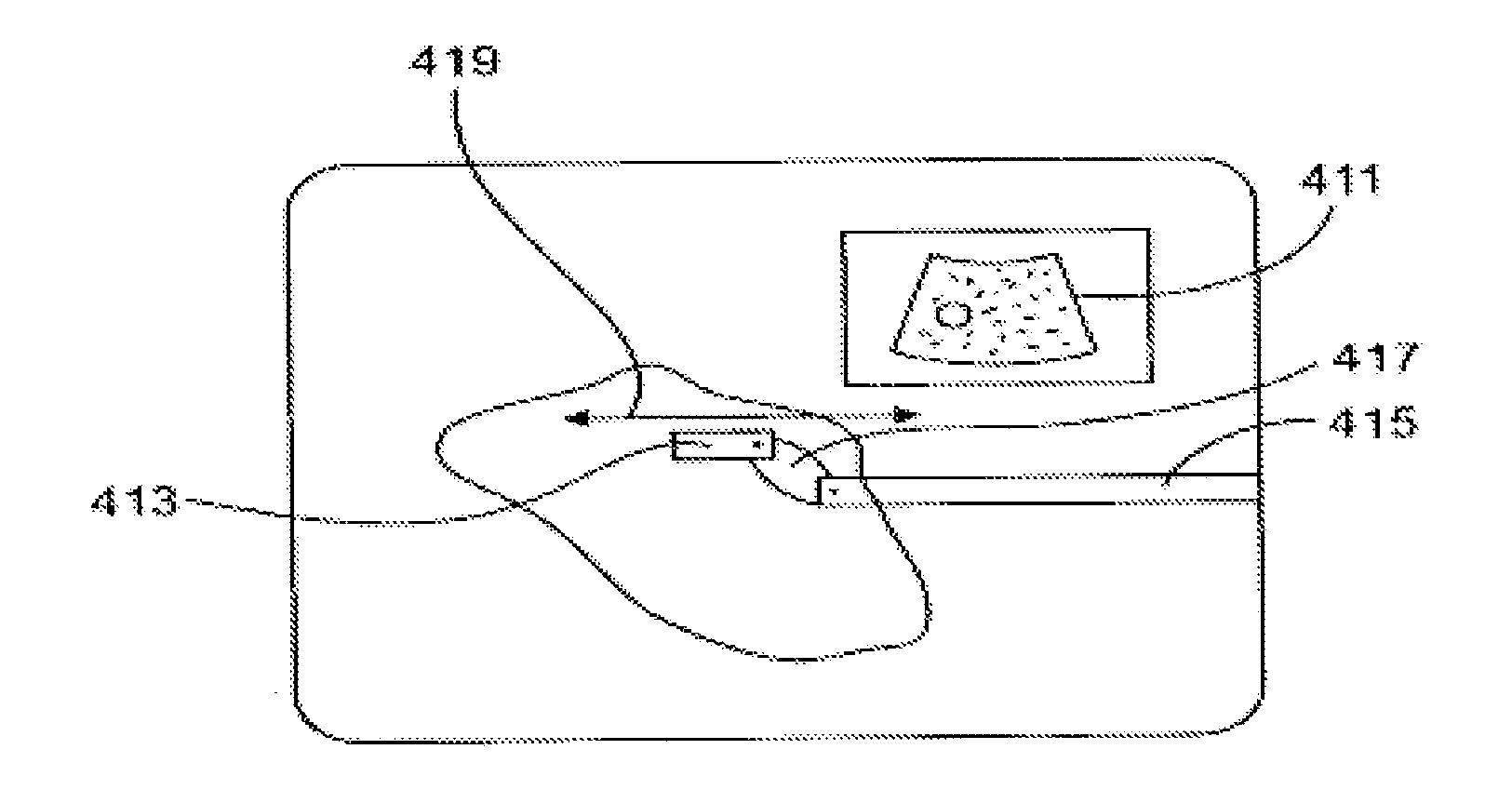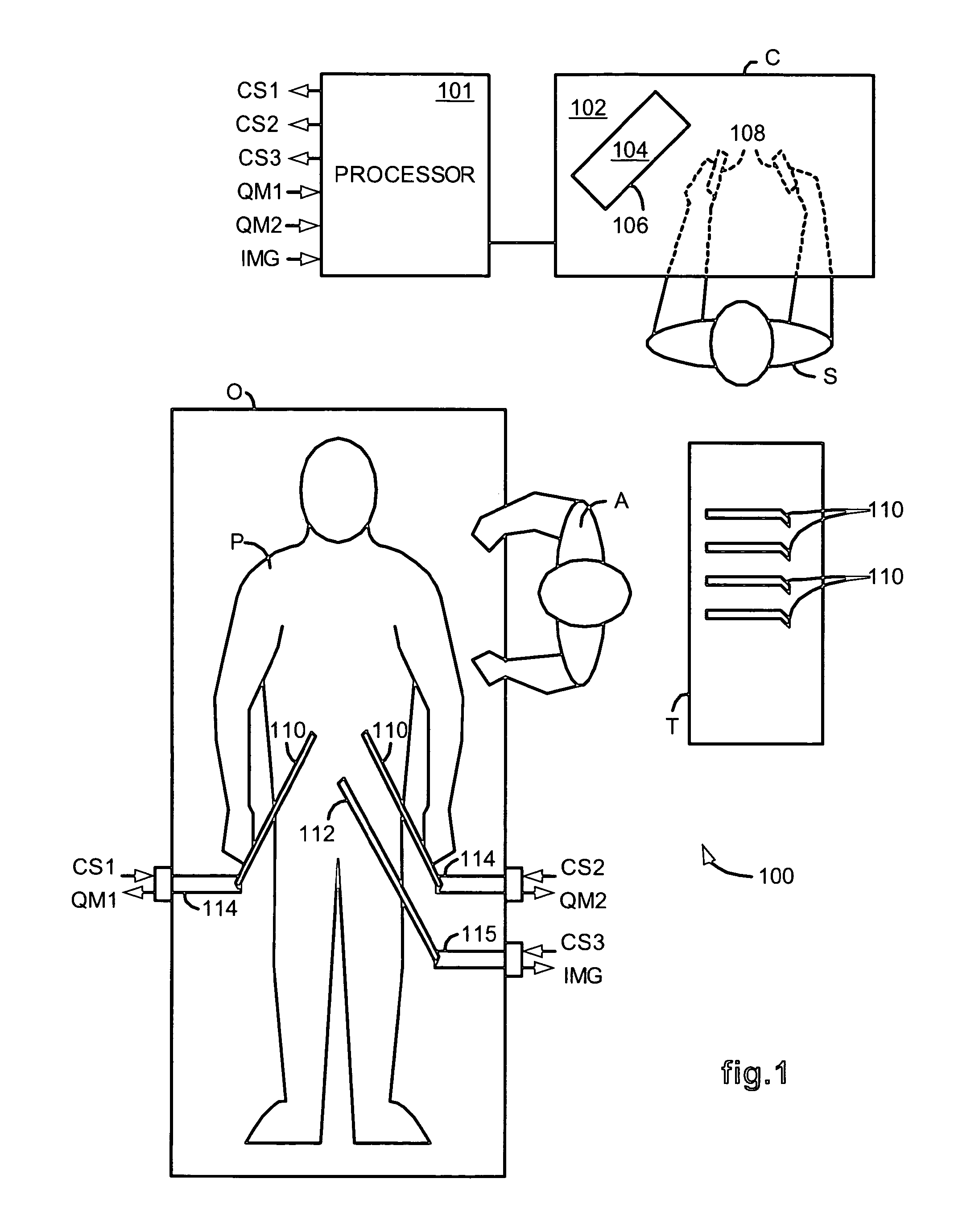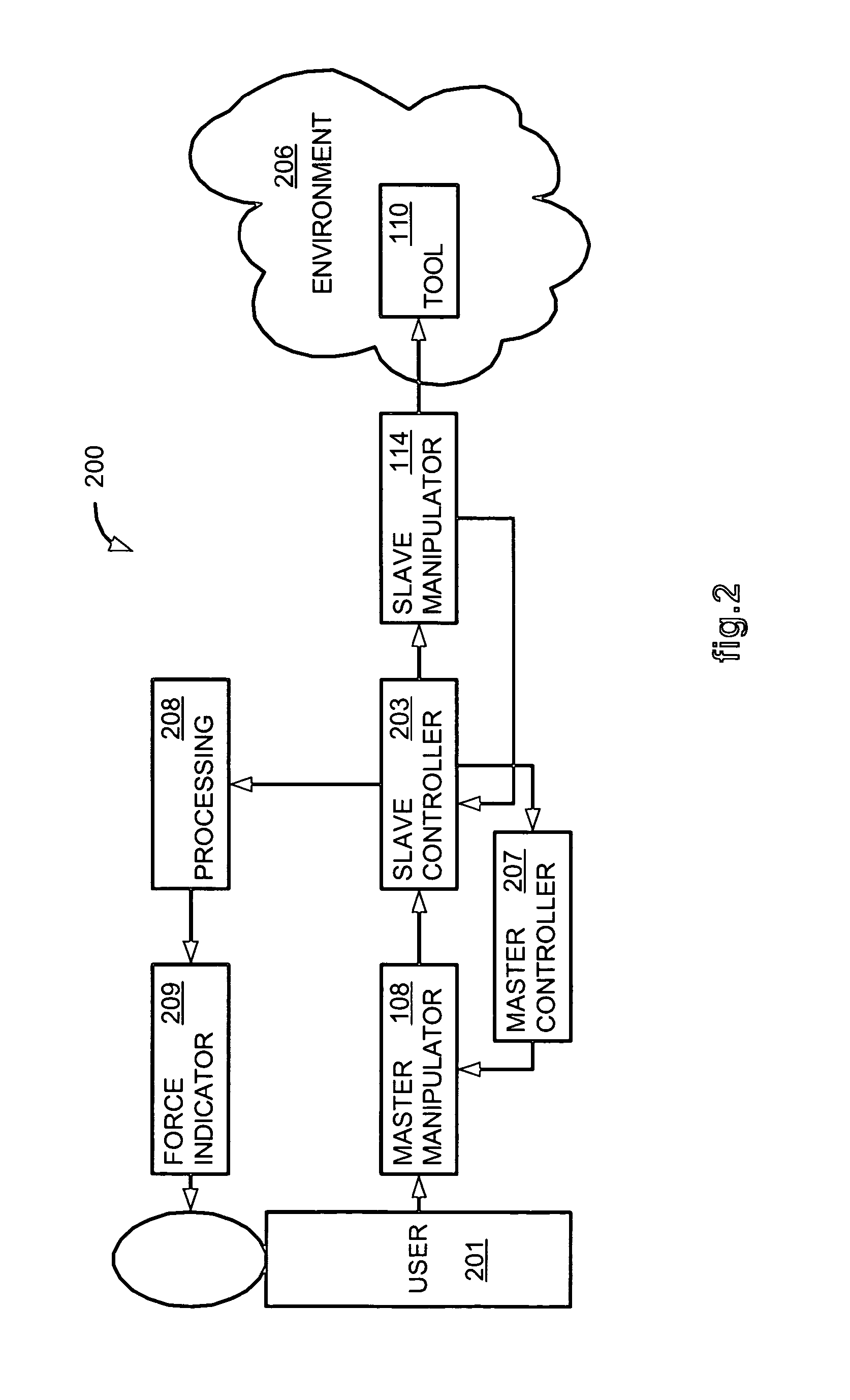Real-Time Generation of Three-Dimensional Ultrasound image using a Two-Dimensional Ultrasound Transducer in a Robotic System
a robotic system and ultrasound transducer technology, applied in the field of robotic devices, can solve the problems of expanding reducing the accuracy of surgery, and reducing the use of minimally invasive techniques, so as to achieve greater accuracy, greater confidence, and safety.
- Summary
- Abstract
- Description
- Claims
- Application Information
AI Technical Summary
Benefits of technology
Problems solved by technology
Method used
Image
Examples
Embodiment Construction
FIG. 1 illustrates, as an example of a telesurgical system, a Minimally Invasive Robotic Surgical (MIRS) system 100 including a Console (“C”) utilized by a Surgeon (“S”) while performing a minimally invasive diagnostic or surgical procedure, usually with assistance from one or more Assistants (“A”), on a Patient (“P”) who is lying down on an Operating table (“O”).
The Console includes a support 102, a monitor 104 for displaying an image of a surgical site to the Surgeon, and one or more control devices 108 (also referred to herein cumulatively as a “master manipulator”). The control devices 108 may include any one or more of a variety of input devices such as joysticks, gloves, trigger-guns, hand-operated controllers, or the like.
The Surgeon performs a procedure by manipulating the control devices 108 which in turn, cause robotic mechanisms 114 (also referred to herein as “slave manipulators”) to manipulate their respective removably coupled instrument or tool assembly 110 (hereinaft...
PUM
 Login to View More
Login to View More Abstract
Description
Claims
Application Information
 Login to View More
Login to View More - R&D
- Intellectual Property
- Life Sciences
- Materials
- Tech Scout
- Unparalleled Data Quality
- Higher Quality Content
- 60% Fewer Hallucinations
Browse by: Latest US Patents, China's latest patents, Technical Efficacy Thesaurus, Application Domain, Technology Topic, Popular Technical Reports.
© 2025 PatSnap. All rights reserved.Legal|Privacy policy|Modern Slavery Act Transparency Statement|Sitemap|About US| Contact US: help@patsnap.com



